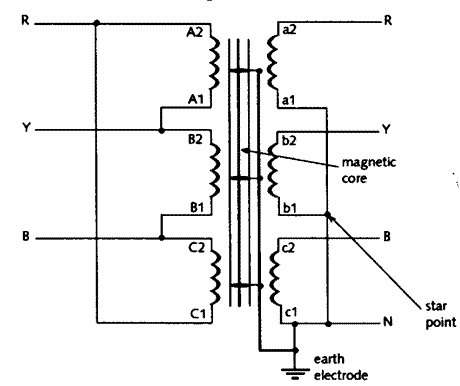The whole of the world may be considered
as a vast conductor which is at reference (zero) potential.
In the UK we refer to this as 'earth' whilst in the USA
it is called 'ground'. People are usually more or less in
contact with earth, so if other parts which are open to
touch become charged at a different voltage from earth a
shock hazard exists (see
{3.4}). The process of earthing is to connect
all these parts which could become charged to the general
mass of earth, to provide a path for fault currents and
to hold the parts as close as possible to earth potential.
In simple theory this will prevent a potential difference
between earth and earthed parts, as well as permitting the
flow of fault current which will cause the operation of
the protective systems.
The standard method of tying the electrical
supply system to earth is to make a direct connection between
the two. This is usually carried out at the supply transformer,
where the neutral conductor (often the star point of a three-phase
supply) is connected to earth using an earth electrode or
the metal sheath and armouring of a buried cable. {Figure
5.1} shows such a connection. Lightning conductor systems
must be bonded to the installation earth with a conductor
no larger in cross-sectional area than that of the earthing
conductor.
 |
Fig
5.1 - Three-phase delta/star transformer
showing earthing arrangements
showing earthing arrangements






No comments:
Post a Comment